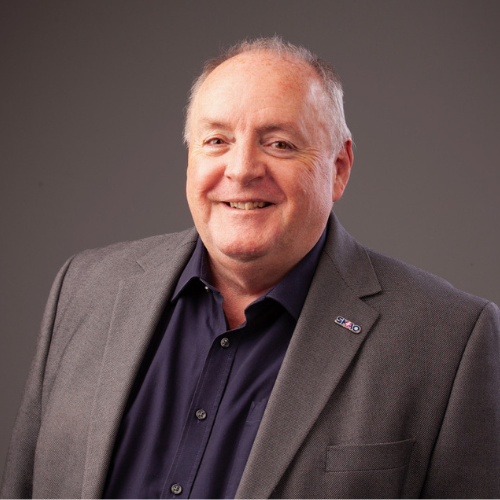Square Kilometre Array: A New Research Infrastructure in an AI World
Day 2 | 10:10 – 10:35 | Main Hall

Prof. Dr. Phil Diamond
Square Kilometre Array Observatory
Abstract
The Square Kilometre Array Observatory (SKAO), an international science mega-project under construction in Australia and South Africa, is a next-generation astronomy and physics facility. It will explore the Universe in the radio domain, providing capability across a huge range of scientific areas from the cosmic dawn to the origins of life. SKAO will generate enormous volumes of data, with ~700 PB/year of science data products being delivered to its user community. I shall describe the SKAO, its current status and schedule. I shall also discuss the impact that AI is already having and is expected to have on the SKAO, from documentation to data processing.
Prof. Dr. Phil Diamond
Professor Philip Diamond CBE is Director-General of the Square Kilometre Array Observatory (SKAO). Phil has led SKAO since October 2012, leading the team designing and constructing one of the largest scientific projects on Earth – an array of cutting-edge radio telescopes and antennas in remote areas of South Africa and Australia. SKAO will be the world’s leading research infrastructure for radio astronomy globally, providing science capabilities to the international astronomical community for decades to come.
Professor Diamond’s international career in radio astronomy includes:
– Chief of CSIRO Astronomy and Space Science (CASS) (2010 – 2012), Australia, with responsibility for overseeing the operations of the major radio astronomy facilities in Australia.
– Director of the Jodrell Bank Centre for Astrophysics at the University of Manchester (2006 – 2010), UK. The University owns and operates the giant Lovell Telescope and, on behalf of the UK’s Science and Technology Facilities Council, the e-MERLIN/VLBI National Facility. Prof. Diamond was responsible for the operation of both facilities.
– Director of MERLIN (1999 – 2006), UK
– Deputy Director of the VLA and VLBA, National Radio Astronomy Observatory (NRAO), USA (1987 – 1999)
– Max-Planck Institute for Radioastronomy in Bonn, Germany (1984 – 1986)
– Onsala Space Observatory, Sweden (1982–1984),
– PhD at the University of Manchester (1982)
Professor Diamond’s research interests include studies of star birth and death – exploring both using radio interferometers such as MERLIN. He is also interested in high resolution studies of supernovae, both in our own Galaxy and in others. Finally, he also dabbles in studies of discs of molecular gas rotating around super-massive black holes at the centres of other galaxies. He has published over 300 research papers in astronomy.
Professor Diamond has been married for 39 years to his wife Jill, has two adult children, and is now besotted with his young grandson. Professor Diamond was awarded the CBE for Services to Radio Astronomy in January 2024.